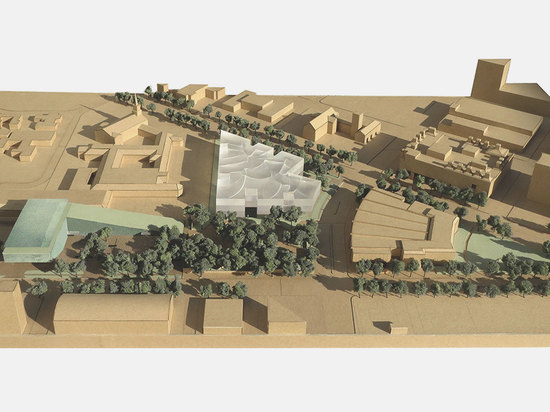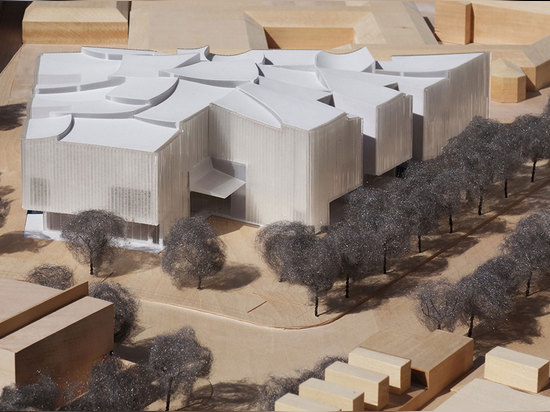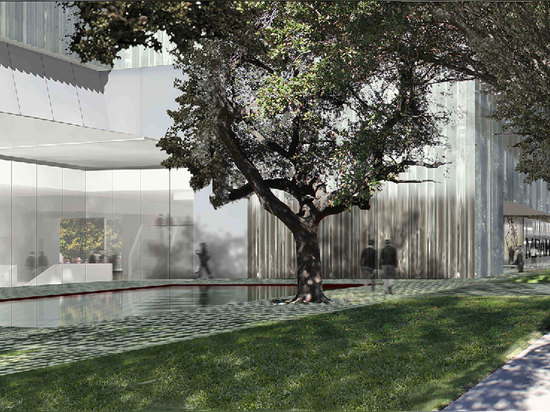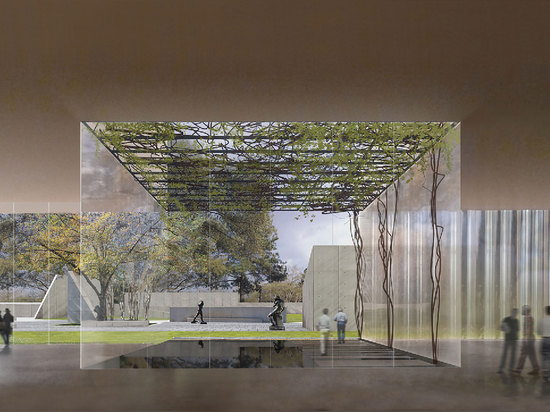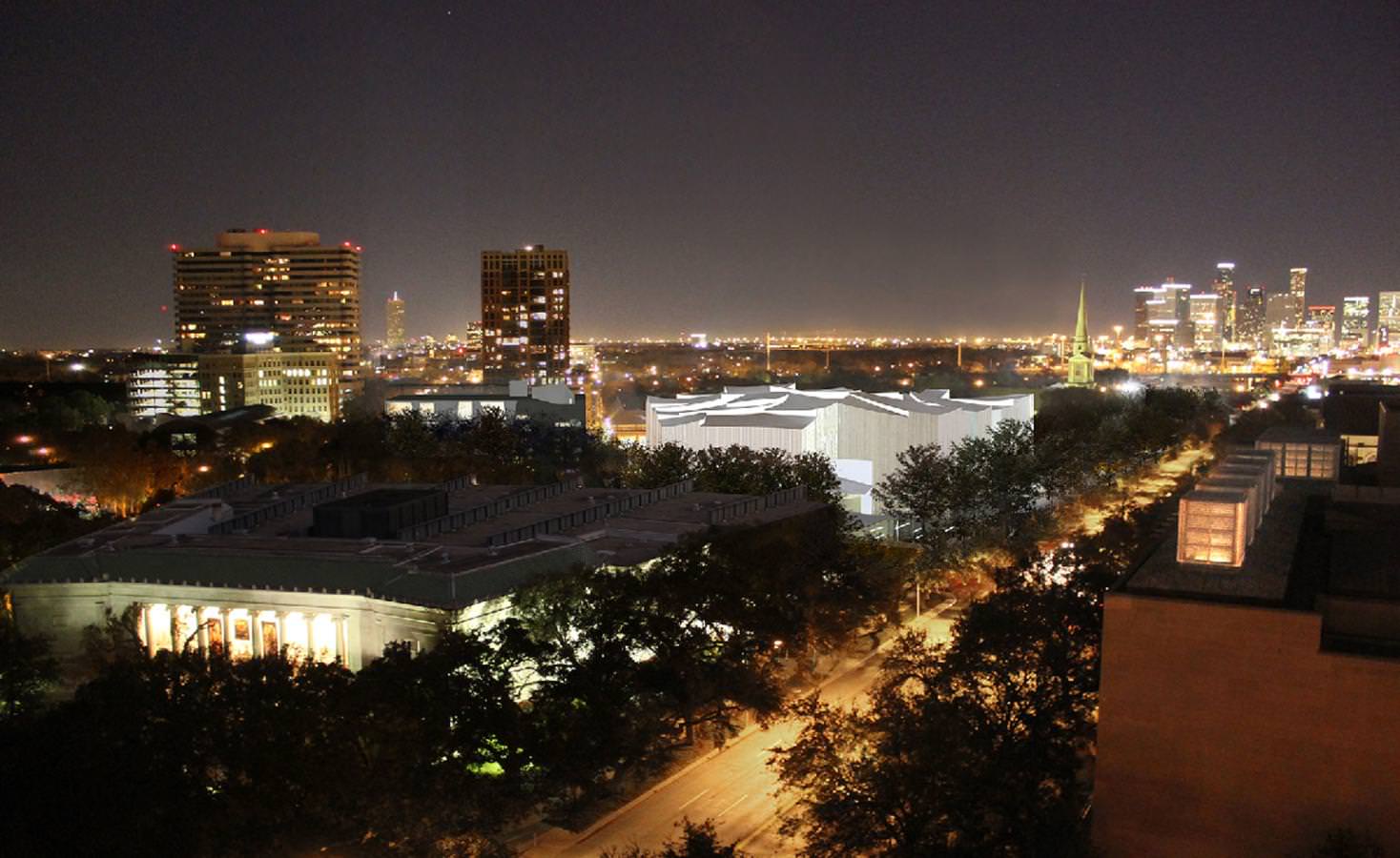
#PUBLIC ARCHITECTURE PROJECTS
Steven Holl Architects' dramatic expansion design for The Museum of Fine Arts in Houston
The city of Houston might be famously associated with the solving of tricky astronautical problems, but as of today, it's forging a new artistic legacy.
The Museum of Fine Arts in Houston has unveiled its plans for a dramatic redevelopment of its 14-acre campus by Steven Holl Architects. With three-quarters of its funding already secured - that's a whopping $330 million of its total $450 million goal - the institution revealed a unifying master plan that will see the construction of a new art school and museum building, complemented by a cutting-edge conservation centre by Lake Flato Architects.
The new structures will blend harmoniously with the campus' existing iconic buildings by Mies van der Rohe, Rafael Moneo, William Watkin, and a sculpture garden by Isamu Noguchi. It will break ground in the coming months and is expected to complete in 2019.
Speaking during the unveiling of the museum's plans, architect Steven Holl said, 'When I look at the whole project, I think it's probably the most important project that I will ever do as an architect. I'm very grateful to have this opportunity. It's not just a building. It's a campus and a public space that's enormously important for the city of Houston.'
The redevelopment of the museum complex has been a long time in the making. Back in 2012, Steven Holl Architects beat out two other practices to win over the museum's directors and board of trustees with a proposal that completely reorientated the brief that its entrants were set.
The original plan tasked architects to include a multi-storey car park in their design proposal, which Holl promptly ignored. 'When I first presented to [the museum], they asked me, 'Well, where's the parking garage?' There isn't any,' he laughed. "And that was the first thing that was supposed to be built. I think that's why we won. It was hard for [the museum] at first because it was breaking the rules of the competition, but over time they realised that was the way to go.'
No stranger to shaping museums or educational institutions, Holl's vision expands the campus and turns it into an integrated place that the community can also experience. It will provide increased pedestrian access with public plazas, gardens and reflecting pools, and improved sidewalks to facilitate circulation in the new complex.
His design for the new Nancy and Rich Kinder Building - a 164,000 sq ft museum for exhibiting 20th and 21st century art, is a translucent glass tube structure, punctuated by seven vertical gardens around its perimeter that will bring a sense of its surroundings indoors. A concave curved canopy, which Holl imagined as the imprints of Texas' big sky and clouds on the roof's surface, allows light to gently filter through to the 25 galleries inside in an organic way. Soft and fluid in contrast to the stone Moneo building and van der Rohe's steel and glass construction close by, Holl's design will hold its own.
On the other hand, his practice's vision for the new Glassell School of Art building is formed by a series of sandblasted concrete panels, placed at dynamic verticals and angles. The L-shaped construction features a ramped amphitheatre that leads up to a walkable rooftop garden, where visitors can enjoy dramatic views of the newly unified campus. In addition to opening onto Noguchi's sculpture garden and providing added outdoor space for programs and performances, the 80,000 sq ft building also sits atop an extensive underground parking garage. Putting two layers of parking underground allowed not only to not build a parking garage, but also to expand the sculpture garden.
The Glassell School of Art building marks the first phase of the master plan and will begin construction in August. 'With this project, I'm making architecture, social space and public space that's so large, it's shaping urban life and the nature of the city,' says Holl. 'The city is the greatest human artefact. One of the wonderful aspects of being an architect is that every once in a while you get a chance to work on the scale of a city. It's the accumulation of these pieces that makes something special.'
